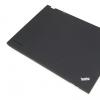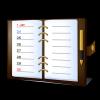So. Life has developed in such a way that I have a house in the village with gas heating. It’s impossible to live there all the time. The house is used as a summer residence. For a couple of winters, I stupidly left the boiler on with a minimum coolant temperature.
But there are two drawbacks.
1. Gas bills are astronomical.
2. If there is a need to come to the house in the middle of winter, the temperature in the house is around 12 degrees.
Therefore, it was necessary to invent something.
I'll clarify right away. The presence of a WI-FI access point in the range of the relay is required. But, I think, if you get confused, you can put a connected mobile phone next to the sensor and distribute a signal from the phone.
Connecting a motion sensor 4 pins with your own hands diagram
Diy motion sensor connection diagram

It happens that you need to install in the country, or in the house, lighting that will be triggered when moving or a person or someone else.
The motion sensor, which was ordered by me from Aliexpress, is good for this function. The link to which will be below. By connecting light through the motion sensor, when a person passes through his field of vision, the light turns on, burns for 1 minute. and turns off again.
In this article I will tell you how to connect such a sensor if it does not have 3 contacts, but 4 like this one.
DIY power supply from an energy-saving light bulb
 When to get 12 Volts for led strip
, or for some other purpose, there is an option to make such a power supply unit with your own hands.
When to get 12 Volts for led strip
, or for some other purpose, there is an option to make such a power supply unit with your own hands.
DIY fan speed controller

This regulator allows you to smoothly adjust variable resistor fan speed.
The floor fan speed regulator circuit turned out to be the simplest. To fit into the case from old charge Nokia phone... Terminals from an ordinary electrical outlet also fit in there.
The installation is quite tight, but this was due to the size of the case ..
DIY lighting for plants
DIY lighting for plants

There is a problem with a lack of lighting plants, flowers or seedlings, and there is a need for artificial light for them, and this is the kind of light we can provide on LEDs do it yourself.
Diy brightness control
Diy brightness control

It all started with the fact that after I installed halogen lamps for lighting at home. When turned on, which often burned out. Sometimes even 1 light bulb a day. Therefore, I decided to make a smooth switching on of the lighting based on the dimmer with my own hands, and I am attaching the dimmer circuit.
DIY refrigerator thermostat
DIY refrigerator thermostat

It all started with the fact that after returning from work and opening the refrigerator, he found it warm. Turning the thermostat knob did not help - the cold did not appear. Therefore, I decided not to buy a new unit, which is also rare, but to make an electronic thermostat on ATtiny85 myself. With the original thermostat, the difference is that the temperature sensor is on the shelf and not hidden in the wall. In addition, 2 LEDs have appeared - they signal that the unit is turned on or the temperature is above the upper threshold.
DIY soil moisture sensor
DIY soil moisture sensor

This device can be used for automatic watering in greenhouses, flower greenhouses, flower beds and indoor plants. Below is a diagram by which you can make the simplest sensor (detector) of moisture (or dryness) of the soil with your own hands. When the soil dries up, a voltage is applied, with a current strength of up to 90mA, which is quite enough, turn on the relay.
It is also suitable for automatically turning on drip irrigation to avoid excess moisture.
Fluorescent lamp power circuit
Power circuit fluorescent lamp.

Often upon failure energy-saving lamps, in it burns out power circuit, and not the lamp itself. As is known, LDS with burned-out filaments, it is necessary to supply with rectified mains current using a starless starting device. In this case, the filaments of the lamp are shunted with a jumper and to which a high voltage is applied to turn on the lamp. There is an instant cold ignition of the lamp, a sharp increase in the voltage across it, when starting without preheating the electrodes. In this article we will look at do-it-yourself lds lamp start-up.
USB keyboard for tablet
USB keyboard for tablet

Somehow, suddenly, I took something and decided to buy a new keyboard for my PC. The desire for novelty cannot be overcome. Changed the background color from white to black, and the color of the letters from red-black to white. A week later, the desire for novelty naturally went like water into sand (an old friend is better than two new ones) and the new thing was sent to the closet for storage - until better times. And so they came for her, did not even imagine that it would happen so quickly. And therefore the name would be even better suited not which is, but how to connect a usb keyboard to a tablet.
For those who are just starting to take their first steps in electronics, it is important to start somewhere. Well, we suggest that you familiarize yourself with ideas that may come in handy in the future and at the same time give an idea of how something should be done. What to choose if you want to make simple ones with your own hands? Here are options that can be used in everyday life.
Simple power regulator for smooth switching on of lamps
This type of device is widely used. The simplest is a conventional diode, which is connected in series with the load. Such regulation can be used to prolong the life of the incandescent lamp, as well as to prevent overheating of the soldering iron. They can also be used to vary the power over a wide range of values. The easiest ones will come first electronic homemade products do it yourself. You can see the diagrams here.
How to protect against line voltage fluctuations

This device disconnects the load if the mains voltage is out of range. As a rule, within the normal range, a deviation of up to 10% of the standard is considered. But due to the peculiarities of the energy supply system in our country, such a framework is not always respected. So, the voltage can be 1.5 times higher, or much lower than necessary. The result is often unpleasant - the equipment fails. Therefore, there is a need for a device that will disconnect the load before something burns out. But when creating such a homemade product, you need to be careful, since the work will be carried out with considerable stress.
How to make a safety transformer
In various electronic designs, transformerless power supplies are often used. Usually such devices have low power, and in order to avoid electric shock, they are placed in an insulating plastic case. But sometimes they need to be configured, and then the protection is opened. To avoid possible injury, a safety isolation transformer is used. It will also be useful when repairing such devices. Structurally, they consist of two identical windings, each of which is designed for the network. As a rule, the power of transformers of this type fluctuates in the range of 60-100 W, this is optimal parameters for customizing various electronics.
A simple source of emergency lighting

What to do if it is necessary that in the event of a power outage, the illumination of a certain area remains? An emergency luminaire based on a standard energy-saving lamp, the power of which does not exceed 11 watts, can serve as a response to such calls. So if you need the light somewhere in the corridor, utility room or workplace, this homemade product will have to be in place. Usually, when voltage is present, they work directly from the network. When it disappears, the lamp begins to operate on battery energy. When the mains voltage is restored, the lamp will work and the battery will be automatically charged. The best do-it-yourself electronic homemade products were left at the end of the article.
Soldering Iron Boost Power Regulator

In cases where it is necessary to solder massive parts or the mains voltage often drops, the use of a soldering iron becomes problematic. And a step-up power regulator can help out from this situation. In these cases, the load (i.e. the soldering iron) is supplied with a rectified mains voltage. The change is carried out using an electrolytic capacitor, the capacity of which makes it possible to obtain a voltage greater than 1.41 network. So, with a standard voltage value of 220 V, it will give 310 V. And if a drop occurs, say, to 160 V, then it turns out that 160 * 1.41 = 225.6 V, which will allow you to operate optimally. But this is just an example. You have the opportunity to make a scheme that suits your specific conditions.
The simplest twilight switch (photo relay)

As new parts are created, fewer and fewer components are now needed to make a piece of equipment. So, for an ordinary twilight switch, only 3 of them are needed. Moreover, due to the versatility of the design, multipurpose use is also possible: in an apartment building; to illuminate the porch or courtyard of a private home, or even a separate room. Pointing to the features of such a design as a twilight switch, it is also called a "photo relay". You can find many implementation schemes that were made either by hobbyists or industrialists. They have their own set of positive and negative properties. Negative properties are usually called either the need for a constant voltage source, or the complexity of the circuit itself. Also, when buying cheap and simple parts or whole sets, they often complain that they simply burn. The functionality of the circuit is based on three components:
- Photocell. Usually, it is understood as photoresistors, phototransistors and photodiodes.
- Comparator.
- Triac, or relay.
When there is daylight, the resistance of the photocell is low and does not exceed the response threshold. But as soon as it darkens, the structure will be turned on at the same moment.
Conclusion
Here are some interesting do-it-yourself electronic homemade products. The main thing in cases when something does not work out is to keep trying, and then everything will succeed. And having gained experience, it will be possible to move on to more complex schemes.
Making electronic homemade products with your own hands gained popularity in the last century, when semiconductor devices appeared. With their help, it was quite easy to assemble devices necessary for everyday life from old equipment. Today, the repair and collection of equipment for a house or a summer residence, for a car or a garage can also be solved at home.
[Hide]
Homemade appliances for home and summer cottages
Every electrician can make electric self-made products for home and summer cottages that use the power of electricity. Most gadgets are built from factory components and only require school knowledge of electricity.
BBQ grill
The electric BBQ grill can be both horizontal and vertical. Stores usually sell vertical ones, and they do a great job with their functions after some tweaking.
To create a horizontal barbecue, you will need a heating element and a frame that resembles a barbecue. A heating element can be made from a ceramic tube and a nichrome spiral wound around it. The tube is fixed through an insulating material in a metal body. Drawings are required to assemble the enclosure.
BBQ grill
An equally interesting idea is a barbecue grill with an electric drive for rotating skewers. By adding an electric motor to a regular barbecue, you can get an excellent device that will cook barbecue offline. To organize a skewer drive, you can use a motor from the wipers, from washing machine or any other 12 volt. With the help of a pulley system and a belt or gear drive, the rotation of the shaft is transmitted to the skewers and the meat is slowly turned over the coals.
Homemade WI-FI antenna
Such an antenna will improve the reception quality and Wi-Fi speed in your home. According to reviews, after connecting it, the signal level rises from 5 to 27 Mbit.
For manufacturing it is necessary:
- small metal sieve or colander;
- Wi-Fi (USB) adapter;
- USB cable;
- drill;
- epoxy resin;
- camera tripod;
- plastic clamps.
Manufacturing process:
- Drill a small hole (14 mm) in the center of the sieve and insert a metal pin into it to secure the adapter.
- We insert the connector from the USB cable into the prepared hole and fix it with epoxy resin. After gluing, the USB connector must be strictly perpendicular to the sieve plane, then the device works more efficiently.
- Then, with the help of two ties, "ears" are made through which the cable is attached.
- We fix the product on a camera tripod. We drill a hole with a diameter of 12 mm in the antenna and clamp it with a nut.
Necessary materials  Insert the pin into the drilled hole
Insert the pin into the drilled hole  We glue the USB cable
We glue the USB cable  We fix the cable
We fix the cable  Tripod
Tripod  Installing the antenna using a tripod
Installing the antenna using a tripod
Electric DIY Garage
Let's consider several projects useful homemade products for the garage.
Homemade chandelier
If you have low lighting in your garage, then an impromptu chandelier will be very useful. To make a bifurcated chuck, you will need a pair of corner chucks, which are sold at your regular hardware store.
Sequencing:
- We remove the wires from the cartridges and fasten them with a plastic tie. We get a socket for two lamps. It remains to connect them to the electrical network.
- For this we use a base from a fluorescent lamp. We carefully break out the lamp, then we solder the wires from our structure to the contacts of the base.
- We insulate them well and attach the base on top of the cartridges.
The use of conventional bulbs in such a design is undesirable - the cartridges can melt from heating.
LED device
Another lighting option could be a homemade LED lighting device.
To make it you will need:
- old fluorescent lamp;
- LED Strip Light;
- connecting wires.
The manufacturing sequence is as follows:
- An LED strip is glued to the luminaire body in one or several rows.
- The connecting wires are connected and fed to the lamp switch.
- The assembled device is tested.
Spot welding machine
The necessary device in the garage will be a homemade spot welding machine, the basis of which is a transformer from an old microwave. A prerequisite is that the transformer must be operational in order not to rewind all the windings.
The welder assembly process is quite simple:
- The transformer is dismantled.
- The secondary winding is carefully removed.
- Two shunts are removed.
- A secondary winding of two to three turns is made from a thick wire (with a diameter of at least 10 mm).
- From a copper rod with a diameter larger than wires, electrodes for resistance welding are made.
Homemade spot welding tool
Useful things with your own hands for fishing
Among homemade products, you can find many interesting ideas for use in field conditions, as well as for hunting and fishing.
Electronic signaling device
An example is an electronic signaling device for fishing with an ordinary fishing rod or other tackle. A simple bite device can be assembled in just half an hour. For it you will need an old squeaky keychain and a strip of plastic 1-2 mm thick.
Assembly of the signaling device:
- The keychain is attached to the rod.
- A strip of plastic is glued to the fishing line and inserted between the contacts of the keychain.
Now, when biting, the fish will pull the line, the plastic will fly out, the contacts will close and the keychain will work.
Underwater camera for winter fishing
With a homemade underwater ice fishing camera, you can see if there is any fish under the hole. And this simplifies the fishing process.
For manufacturing you will need:
- small camera;
- sealed camera box;
- small TV;
- car battery to provide power to the camera;
- extension;
- inverter;
- lead for cargo;
- ultraviolet diodes for underwater lighting;
- superglue, electrical tape, sealant.
Build process:
- Two holes are made in the upper part of the box. An extension cable is inserted through one. Through the second - a wire that connects the camera to the TV.
- Several more holes are made in the box, into which lamps are inserted for illumination. The wires from the bulbs are soldered into one circuit (for example, with a parallel arrangement), which is connected to the cable that provides power.
- The holes are sealed with glue and tape for a tight seal.
- Lead is melted and small elongated cubes are poured out of it. Place them at the bottom of the box.
- Set up the camera, connect to the cable. Then it is carefully placed in the box so that it has a clear direction forward and horizontally and transmits a high-quality image. For stability, the camera is surrounded by a soft material.
- A torso (rope, belt) is attached to the box, with which the camera will be lowered to a depth. For convenience, you can combine it, the power cable and the communication wire of the video camera with the TV into one core, fastened with electrical tape.
- Connect the power cable of the camcorder to the battery and test the device.
Homemade fish bait
You can make a good bait for fishing yourself. It will be a device based on a simple multivibrator.
You will need:
- a sound emitter, for example, from a child's toy;
- wires;
- a small plastic jar, for example, for medicinal pills;
- electronic board;
- regulator with a plastic stem;
- a piece of styrofoam;
- batteries;
- float weights;
- volume control.
The bait is assembled as follows:
- You need to solder the circuit and check it.
- Two wires are soldered to the sound emitter. Then they are carried inside the body and connected to the board.
- A regulator with a plastic rod is placed in the lid of the jar.
- A dense circle cut out of foam plastic is installed on top of the board, which separates the board from the battery.
- Weights are fixed at the bottom of the jar so that the container is kept on the water like a float.
- The knob sets the frequency and changes the sound.
 Bait scheme - 1
Bait scheme - 1  Bait scheme - 2
Bait scheme - 2
Electronic homemade products for the car
Car enthusiasts create DIY homemade products to improve appearance and the convenience of using the car.
Electric autosampler
For a car, a simple homemade electrical probe is perfect. It can indicate the presence of 12 volts in the electrical circuit. With the help of it, the serviceability of the relay, as well as light bulbs and other equipment is checked. You can make such a device from a syringe and LEDs.
Assembly diagram:
- Two LEDs are soldered with opposite leads (plus one to minus the other and vice versa).
- A steel probe is connected to one of the solder joints through a 300 Ohm resistance. The other solder is the contact for the batteries.
- The structure is inserted into the syringe so that the probe comes out of the needle hole. Most of the probe is insulated with a PVC tube.
- 4 LR44 batteries are inserted into the syringe so that one of the poles is connected to the LED contact.
- To the other pole of the batteries, a contact is made from a flexible wire with a crocodile clip.
The video tells how to make a syringe tester. Filmed by ILYANOV channel.
Light switch
The circuit for smoothly turning off the light in the car interior is quite simple to manufacture. Such electronics are suitable for any car. A small board consisting of a capacitor and diodes is soldered in parallel to the terminals of the passenger compartment lamp. The drop in the voltage of electricity will occur gradually and will create the effect of a gradually dying light.
Car subwoofer
To make a car subwoofer with your own hands, you must first purchase a speaker. It is necessary to build on its dimensions when calculating the size of the case.
The simplest and most successful form of the subwoofer for the trunk is a truncated pyramid with a slope like the rear seats.
LED fog lights
With your own hands, you can make car fog lights on LEDs.
For creativity you will need:
- two ten-watt LEDs;
- 2 lenses from an old projector;
- gaskets from plastic pipes;
- LM317T microcircuits;
- resistors.
DIY assembly instructions:
- The LEDs are installed on pre-prepared aluminum radiators.
- A structure is assembled from headlight housings, lenses from projectors, gaskets and diodes on radiators.
- Fog lights are powered through current stabilizers on LM317T microcircuits and resistors.
Car carrier
A very convenient car carrying is obtained from a computer USB lamp. It is compact and can be connected to any place in the car wiring.
Manufacturing scheme:
- Remove the contacts from the USB plug.
- In the body of the plug we connect the wires of the lamp and the car clips "crocodile".
- For fixing in the right place (even horizontally), a magnet is placed on the plug.
Many electrical devices you can repair or make new ones with your own hands. For this house, there is always something that can be redone to perform new functions: old Digital Watch, baby car, obsolete computer and much more. Useful crafts can always be repaired or altered. For work, it is better to have a workshop with tools.
Equipped Master's Home Workshop
Power Supply
Homemade electronic devices need nutrition different voltage... In particular, soldering requires a regulated power supply. Such an opportunity can be provided by the LM-317 microcircuit, which is a voltage stabilizer.

Regulated power supply circuit
Devices based on this circuit allow you to change the output voltage within 1.2-30 V, using a variable resistor P1. The permissible current is 1.5 A, the power of the device depends on the choice of the transformer.
Adjustment of the voltmeter is carried out with a trimmer resistor P2. To do this, set the current to 1 mA at the output voltage of the circuit 30 V.
The more power is released on the microcircuit, the greater the difference between the input and output signals. To reduce heating, it requires a radiator with a cooler.
A homemade board with an LM-317 microcircuit fits into a case - a computer power supply. A voltmeter and clamps to the output wires are installed on the front panel made of PCB.
Simple auto test
A probe for cars and other purposes should always be at hand at home, in the garage or on the road. The figure below shows a homemade scheme that allows you to check electrical circuits with a resistance of up to 10 kΩ and the presence of a voltage of 6-15 V.
The two indication circuits are connected in series with the battery and in parallel with each other. The first consists of a resistor R1 and an LED HL1, which glows when checking the voltage. The battery is being recharged at the same time.

Scheme and design: a) homemade circuit, which allows you to check electrical circuits with a resistance of up to 10 kOhm and the presence of a voltage of 6-15 V; b) homemade construction auto test
When the circuit is tested, current flows from the battery through the HL2, R2 circuit. The HL2 LED is on. Its brightness will be the greater, the lower the resistance of the circuit.
Like all homemade products, constructively the probe can be performed different ways, for example, place it in a transparent plastic case that is easy to glue with your own hands.
Such devices are indispensable when repairing an electrical network or household appliance at home. Crafts can be more complex and have additional functions.
Electric appliances for heat-treating meat products without the use of fuel are made in small quantities and can be used at home or in the country. To prepare a barbecue, using an electric barbecue grill, there is no need to spend expensive hours of rest, standing on the street by the barbecue.
In specialized stores, you can choose any device, but a lot is decided by the price. If you have the skills to handle electricity, it will be much cheaper to make an electric BBQ grill with your own hands.
Structures are made in horizontal or vertical design. The power of the device usually does not exceed 1.5 kW. The meat is heated using a spiral with a tungsten or nichrome filament. All metal parts are made of stainless steel.
Typical devices are vertical heaters in the center and skewers with food around. They are attached from above. It is advisable to make the skewers in the form of spirals, from which the meat does not slide down during the cooking process.

Type of vertical BBQ grill
For high-quality cooking of a kebab maker with your own hands, the skewer should be placed as close to the heater as possible, but so that the product does not touch the spiral. When placed at a distance, the meat will not fry but dry.
Pieces of product, no more than 40 mm in size, are placed on a skewer, which is placed vertically around the heater. Then the electricity is turned on and the spiral is heated.
The heater is based on a heat-resistant ceramic tube with a coil wound around it. Fastening at the bottom is done with a special chuck.
In the round base there are special cups for collecting fat and a frame that serves to hold the skewers upright.
Cups are made of stainless steel. From below, they have cruciform projections, which are inserted into the slots of the base. Inside they are mounted devices for attaching skewers. Fixing the cup on both sides allows them to hold the skewers upright.
The connection must be strong and at the same time easy to disassemble for cleaning. A common removable tray can be made for all skewers.
The cross-sectional lead wire is selected for the power of the heater (2.5 or 4 mm 2). At home or in the country, there must be a 16 A socket for him.
Timer for watering plants
Devices with timers are used for drip irrigation of a site from a container at a certain time. They can be connected to valves of any capacity.
Often branded devices do not provide the required reliability. Then an old wall clock comes to the rescue, which is in good working order, but is no longer used at home. Small magnets are attached to the ends of the minute and hour hands, and 3 reed switches are attached to the dial.

Scheme of a timer for watering plants in which a wall clock is applied
As soon as the hour hand reaches the number 7, and the minute hand reaches 12, which corresponds to the time of 7 o'clock, the reed switches SA1 and SA3 are triggered and the signal opens the solenoid valve. After 2 hours, the arrows will move to 9 and 12, and the current through the contacts of the reed switches SA1 and SA2 will be supplied to close the valve.
The diagram shows a "rain sensor", which in wet weather closes the transistor VT1 and the valve remains constantly closed. There is also a manual control of the solenoid valve via buttons S1 and S2.
You can set the clock for any time the valve is turned on.
Car with remote control
Homemade radio-controlled models capture not only children, but also adults. They can be used to play at home or arrange real competitions in the yard. For DIY assembly, you need a chassis with wheels, an electric motor and a body.
There is a large assortment on sale, but first of all, you need to decide which machine is best to make. The control panel can be wired or radio-controlled.
When choosing parts, you should pay attention to their quality. The plastic should not have chipping, inclusions and other mechanical defects. Wheels are sold with a chassis and should turn easily. Grip is better provided by rubber. Plastic wheels are much worse in this regard.
It is better for a beginner to take an electric motor, which is cheaper and easier to maintain than an internal combustion engine. You can choose any body or make according to your own sketch.
The motor, battery and radio unit with antenna are installed on the mini-car chassis. If a kit with accessories is purchased, assembly instructions are attached to it.
After installing the parts, the operation of the motor is regulated. The case is installed on the chassis after everything is working.
Assembling mini-copies can be done at home as follows:
- the car is assembled carefully and jointly;
- the materials of the model parts may differ from the original;
- small and insignificant details can be omitted.
The model can be made without looping on a certain car brand. Much depends on finances and free time. Assembling a mini-car at home with your child is of great educational value.
The work on assembling the car model is carried out according to the plan. Some parts need to be purchased, but old toys can be used.
The motor must match the weight of the device in terms of power. Fresh batteries or accumulator are used for power supply.
If you use a special auto-constructor, crafts can be very diverse. Assembly sequence:
- the frame is assembled first;
- the motor is attached and regulated;
- a power source is installed;
- an antenna with a radio unit is fixed;
- wheels are installed and adjusted.

Types of radio-controlled car models
Many homemade tricks are revealed in this video.
Electronic homemade products can make life more comfortable and save a lot of money. In addition, you can find use for old electrical appliances so that they do not gather dust in the pantry for no purpose. Useful DIY crafts are often better than factory-made products.
Every day it becomes more and more, there are many new articles, then it is quite difficult for new visitors to immediately navigate and revise at a time everything that has already been written and previously posted.
I would very much like to draw the attention of all visitors to individual articles that were posted on the site earlier. In order not to have to search for a long time necessary information I will make several "entry pages" with links to the most interesting and useful articles on specific topics.
Let's call the first such page "Useful electronic homemade products". Simple electronic circuits are considered here, which are available for implementation by people of all skill levels. The circuits are built using a modern electronic base.
All information in the articles is presented in a very accessible form and to the extent necessary for practical work... Naturally, to implement such schemes, you need to understand at least the basics of electronics.
So, a selection of the most interesting articles on the site by topic "Useful electronic homemade products"... The author of the articles is Boris Aladyshkin.
The modern element base of electronics greatly simplifies the circuitry. Even an ordinary twilight switch can now be assembled from just three parts.
The article describes a simple and reliable electric pump control scheme. Despite the extreme simplicity of the circuit, the device can operate in two modes: water rise and drainage.
The article contains several schemes of devices for spot welding.
With the help of the described structure, it is possible to determine whether or not a mechanism located in another room or building is working. The vibration of the mechanism itself is information about the work.
A story about what a safety transformer is, what it is for and how you can make it yourself.
Description of a simple device that disconnects the load if the mains voltage goes out of range.
The article describes a circuit of a simple thermostat using an adjustable zener diode TL431.
An article on how to make a device for smoothly switching on lamps using the KR1182PM1 microcircuit.
Sometimes, with reduced voltage in the network or soldering of massive parts, it becomes simply impossible to use a soldering iron. This is where a step-up power regulator for a soldering iron can come to the rescue.
An article about what can be replaced mechanical thermostat oil heating radiator.
Description of a simple and reliable thermostat circuit for a heating system.
The article provides a description of the converter circuit, made on a modern element base, containing a minimum number of parts and allowing to obtain significant power in the load.
An article about various ways to connect a load to a control unit on microcircuits using relays and thyristors.
Description of a simple control circuit for LED garlands.
The design of a simple timer that allows you to turn on and off the load at specified intervals. The working time and the pause time do not depend on each other.
Description of the circuit and principle of operation of a simple emergency luminaire based on an energy-saving lamp.
A detailed story about the popular "laser-iron" manufacturing technology printed circuit boards, its features and nuances.














